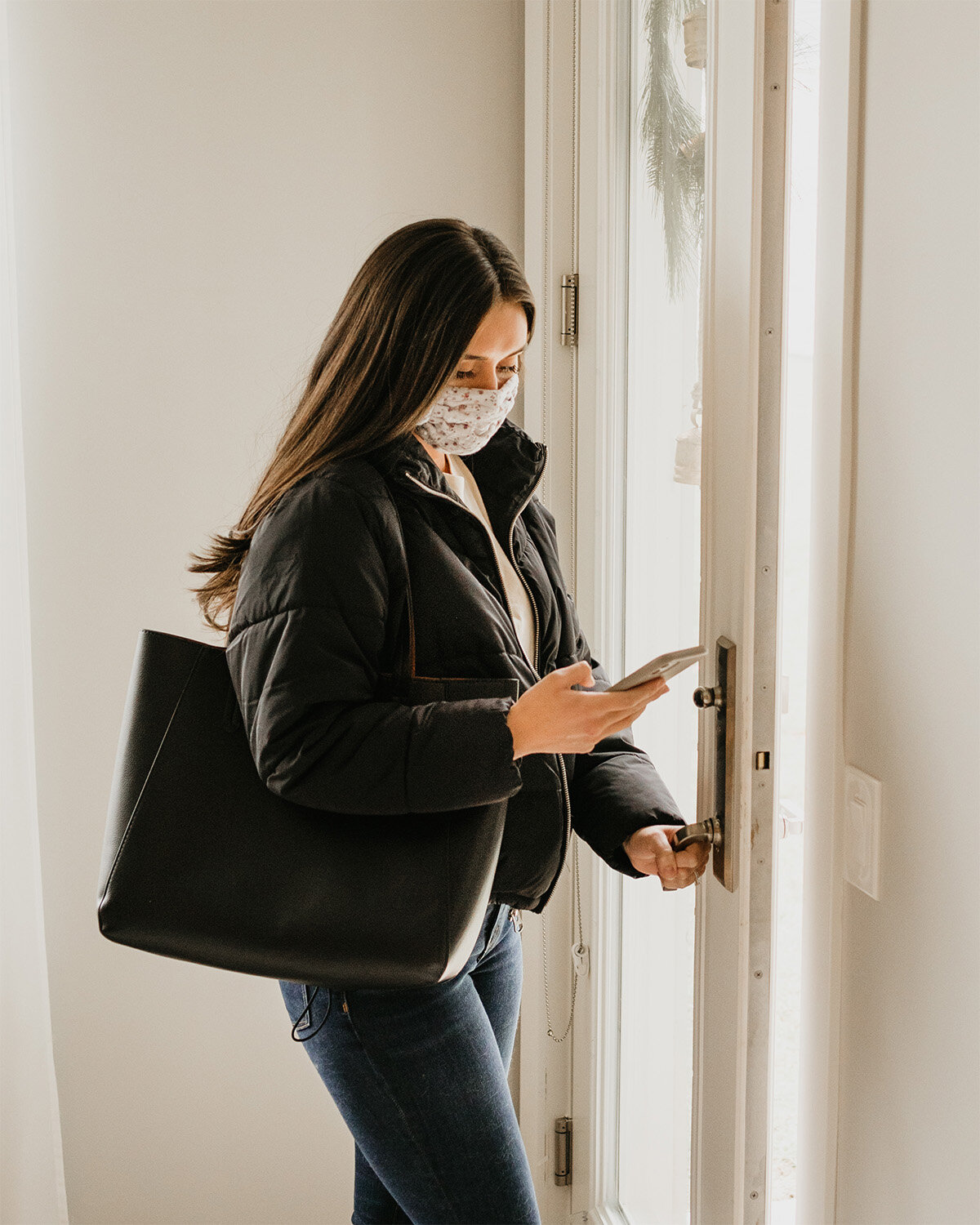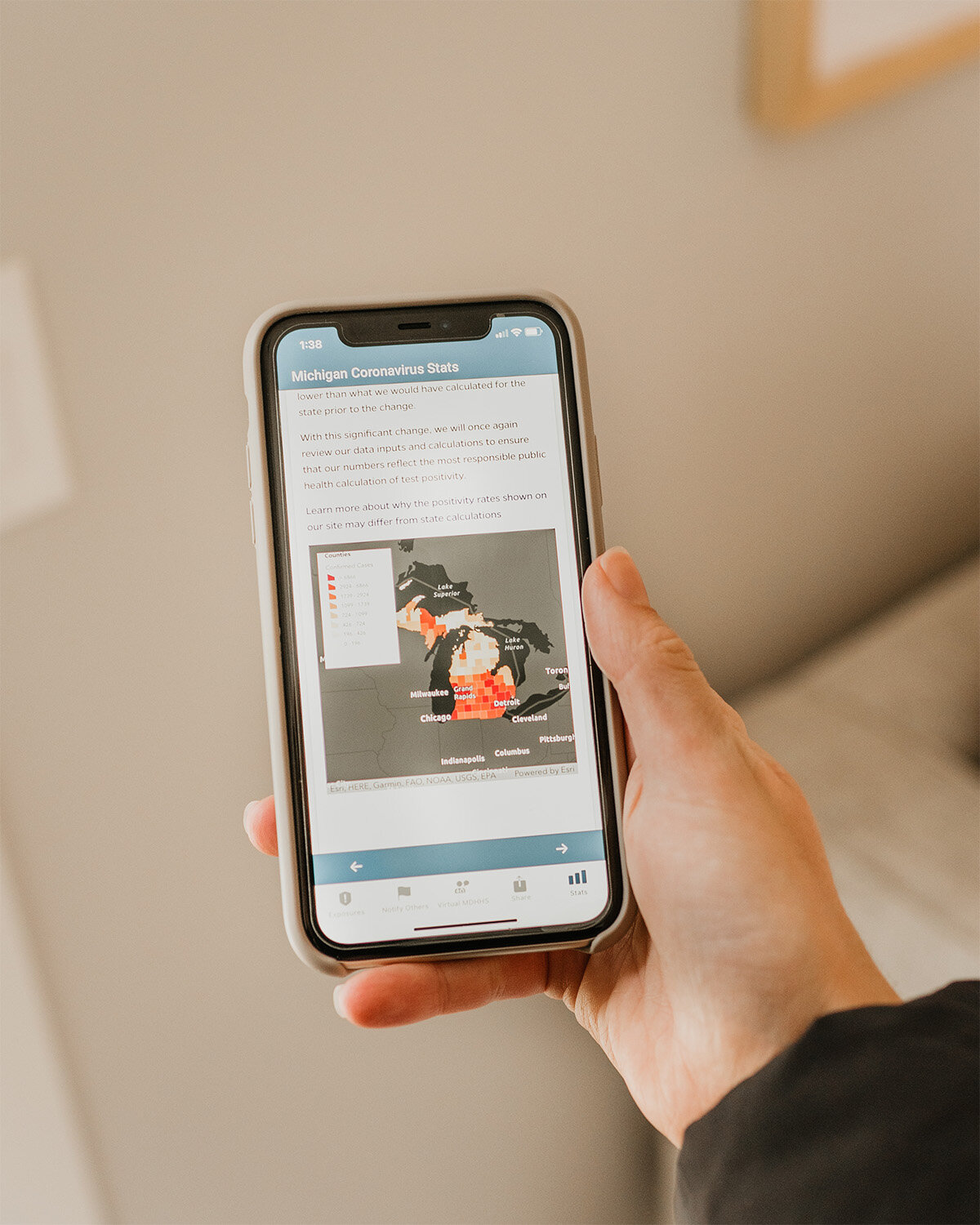Lorem ipsum dolor sit amet, consectetur adipiscing elit. Quisque ut ullamcorper libero. Cras lacinia aliquet mauris, nec semper enim vulputate vitae. Mauris nec nisi congue sem suscipit lacinia nec eget libero. Integer bibendum, mi eu pretium sagittis, arcu dui gravida elit, vel aliquam odio ante eu lectus. Curabitur id vehicula ex.
explore
welcome to our
home on the web
Weddings
Portraits
Engagements
personal
Sponsored by The Michigan Department of Health and Human Services
In many ways, it feels like a lifetime ago when I think about the way life was before the COVID-19 outbreak. My everyday routine looked so much different back then, from working out in a public gym, getting caught in traffic during my morning commute, and working 9 am-5 pm in a corporate office building with over 5,000 people. Now I exercise and work my full-time job from home alongside my husband and my dog. I love spending extra time with my closest family and having the flexibility to work from home, but I miss many things about life before COVID-19. I am heartbroken for the amount of loss and hardships our world has faced this year. Although it is easy to feel hopeless during these unprecedented times, it is so important to focus on the things we can control, including doing our part as individuals to prevent the spread of COVID-19.
Best practices for preventing the spread of COVID-19
Although life before COVID-19 seems so long ago, this virus is still very new. Scientists and medical experts are learning more about the virus each day, which is why we must stay up to date on the latest information and adapt to the most recent guidelines. As we now know, nobody is immune to COVID-19 regardless of their age or health conditions. Even if you feel healthy, there is still a chance you could have the virus as 40% of people who have COVID-19 may be asymptomatic. Unfortunately, that means almost one out of every two people could be infected with this virus. While the virus may cause a mild illness and full recovery for some, it can be very life-threatening for others.
One point of discovery that has not changed since the outbreak of COVID-19 is that the best way to prevent the spread of the virus is to wear a mask and stay at least 6 feet apart from others. Doctors and scientists agree that wearing masks and face coverings can help to prevent the spread of the virus by about 70%. Cloth face masks have become widely available due to the increase in demand and are highly recommended by health experts to wear as a way to reduce the spread of COVID-19. A great way to make sure you always have a mask available is to keep an extra one in your car, purse, jacket, etc. Although wearing masks alone will not end this pandemic, wearing one could absolutely help save lives.
In the state of Michigan, it is required to wear masks in indoor public places, congested outdoor spaces, and during any occasion you may be in close contact with people outside of your household. Face coverings should not be placed on children age 2 or younger or anyone that has trouble breathing, is incapacitated, unconscious, or otherwise unable to remove a mask without help from others. For those that are deaf, hard of hearing, or interact with someone who is, a clear mask is recommended.
Simple, everyday practices that protect you from other illnesses are also best practices that can be used to help protect you from COVID-19. Did you know droplets from a cough can spread 6 feet and sneeze droplets up to 27 feet? This is why wearing a mask and remembering to cover your mouth when sneezing or coughing is essential to prevent droplets from potentially spreading the virus. These droplets can also spread when you speak loudly or talk while standing close to someone. It is also crucial to wash your hands with soap and water frequently and using hand sanitizer when soap and water are unavailable. Be sure to avoid touching your mouth, eyes, or nose with unwashed hands as well.
I know masks can be uncomfortable, however, it is important to remember that a little discomfort and inconvenience can make such a positive difference in preventing the spread of a life-threatening virus. I wear a mask not only to avoid getting sick myself but to make sure I am doing my part to keep my closest loved ones safe as well as my community. Instead of focusing on all the things I am unable to do during this time, I try to focus on all the good things I can do, such as spend more time with my husband, go on long walks with my dog, work on my blog, watch lots of movies, and bake more often. We all want life to “get back to normal” and be able to do all the things we enjoy and see all the people we love face to face instead of through a screen. I am confident that day will come, but until then, we have to do our best to rally together, unified and committed to doing our part to keep each other safe.
Stopping COVID-19 may be as simple as picking up your phone
After living with the COVID-19 virus for over six months, it is expected to have a mix of emotions surrounding it. You may feel scared, tired, frustrated, etc. in regard to the virus, and each emotion is valid considering the circumstances. Receiving a positive COVID-19 test result may kick fears into high gear but it is vital to take responsible action to help with contact tracing as soon as possible. Contact tracing is the process of contacting everyone in Michigan who has had contact with an individual who tested positive for COVID-19 to bring the test results to their attention. This process starts with individuals confirming or speaking up about suspected infections. From there, public health employees reach out and inquire about close contacts they have had during the time when they may have been infectious. To ensure contact tracing is successful, anyone who may have been exposed to the individual who has a positive, or suspected positive case, should be contacted. Contact tracers then call anyone who may have been exposed as quickly and sensitively as possible while protecting the privacy of both patients and contacts. These conversations provide information and support to understand their risk and how to keep others safe. The people that are contacted may be asked to monitor themselves for illness and to get tested or seek help if they become ill. They may also be asked to quarantine or isolate themselves. All contact tracing calls are confidential.
If you receive a call from 866-806-3447, MI COVID HELP, or your local health department, please answer and provide information that could help keep your loved ones and community safe. Please note that health department tracers will never ask you for personal identification like your Social Security Number, driver’s license, or credit card information. If a caller says they work for the health department and continues to ask for personal or financial information, it is likely a scam, so please be aware. Since we are all running around a bit more than usual during the holiday season, even in 2020, it is very important to be available when receiving these calls to help prevent the spread of COVID-19.
Help protect your loved ones by downloading and using the MI COVID Alert app
The more people using the app, the better it will work to prevent the spread of the virus. Invite people in your mobile phone contacts to download the app from the Apple or Google app stores. Depending on your phone’s operating system, you can have notifications alert you when there is a possible exposure. The MI COVID Alert app is anonymous, free, and easy to use. It is a great resource to help you stay informed, as well as protect yourself and your community from spreading COVID-19. We have Michigan State University and the surrounding community to thank for successfully piloting this app and Oxford University for researching that infections can be reduced even if just 15% of a population uses an exposure notification app. In the initial weeks of the pilot, 46,704 people downloaded the app showing a demand for an app with this combined technology and privacy.
If you test positive for COVID-19, you will be given instructions from the Michigan Department of Health and Human Services or the local health department to enter a code and share your test results anonymously on the app. This process ensures that results on the app are accurate and will start alerting other users as soon as 10 hours later. The app uses low energy Bluetooth technology to detect other phones that also have the app near you and checks every two hours. Without identifying you, the app alerts anyone you were in close contact with during the time you may have been unknowingly spreading the virus. When notified of a possible COVID-19 exposure due to being in close contact (within 6 feet for at least 15 minutes) with someone who has COVID-19, you will also be informed how many days ago the exposure took place. This will help you identify where exposure might have taken place, encourage you to get tested and consider quarantining. Please note that if you delete the app from your phone, your information will also be deleted.
Although the MI COVID Alert app is a great tool to alert you and others of possible virus exposures and keep everyone using the app informed, it is not the end all be all. The app DOES NOT replace contact tracing, the need to wear masks and social distance in public, as well as take other precautions such as washing your hands frequently. If you test positive for COVID-19, you must communicate to health officials who you may have been in close contact before notifying the app. If you have not tested positive for COVID-19, it is still important to pick up the phone when receiving a call from your local health department to make sure you are taking all necessary precautions to prevent the spread of the virus.
The MI COVID Alert app works closely with Google and Apple, using Bluetooth technology. This means the app will also work if you are in another state and are near another MI COVID Alert user or a user of a similar app in select states. Other states that have introduced exposure notification apps include Virginia, Arizona, New York, Alabama, Pennsylvania, Colorado, Delaware, Nevada, North Dakota, North Carolina, and New Jersey. Several other states have similar apps in development.
#block-yui_3_17_2_1_1608691906820_5705 .sqs-gallery-block-grid .sqs-gallery-design-grid { margin-right: -10px; }
#block-yui_3_17_2_1_1608691906820_5705 .sqs-gallery-block-grid .sqs-gallery-design-grid-slide .margin-wrapper { margin-right: 10px; margin-bottom: 10px; }
Get tested and consider quarantining if you may have been in close contact with someone who tested positive for COVID-19
Thankfully, there are many easy testing options, including free testing locations. To find a testing location near you, visit Michigan.gov/CoronavirusTest, and schedule an appointment. You can also dial 2-1-1 or call Michigan’s COVID Hotline at 888-535-6136 from 8 am to 5 pm, Monday through Friday. When calling, press 1 to connect with an operator who can assist you in finding a nearby location to schedule a testing appointment.
I hope you found this post helpful and will consider downloading the MI COVID Alert app before closing out of this tab to ensure you are contributing to a resource that can help prevent the spread of COVID-19 if enough people are willing to use it. Living through this pandemic is definitely not easy, but if we are willing to work together and keep safety a priority, we will all come out of this season of life stronger and more unified. Please know that I am wishing all of you a safe and happy holiday season!
To learn more about how to stop the spread of COVID-19 or for other resources, visit The Michigan Department of Health and Human Services website here.


